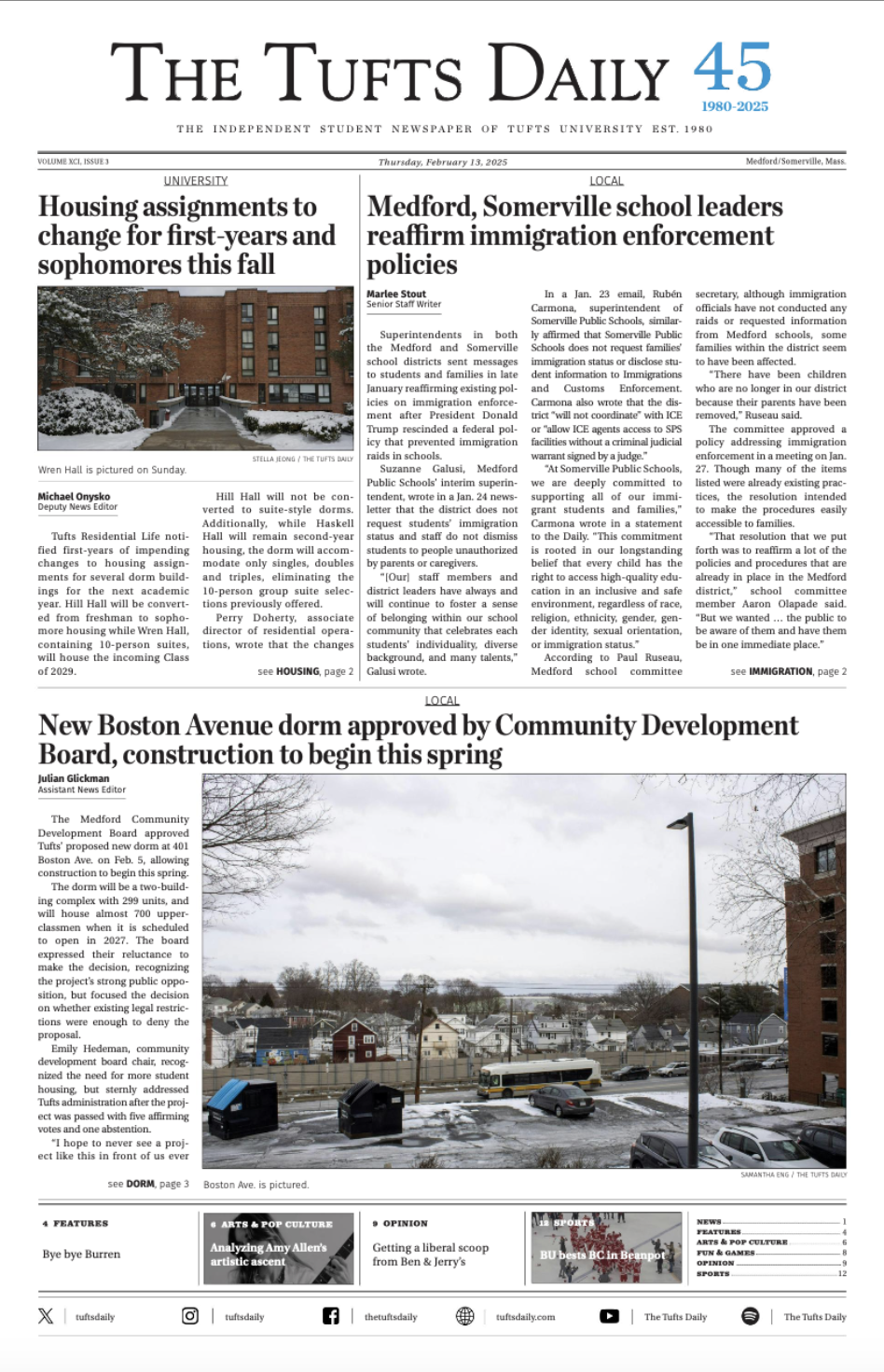Going to the first day of classes, Tufts students are likely to find their professors wearing a variety of styles of clothing -- ranging from suits and ties to jeans and sweaters. Students at Tufts have gone from mandatory skirts for women and jackets for men in the 1950s to jeans and ultra-casual sweats today, and faculty styles have also changed.
One of the biggest differences in faculty style is the clothing worn by female professors. Women of years gone by were often expected to wear skirts -- pants were not allowed. Barbara Grossman, chair of the department of Drama and Dance, encountered this earlier in her career. Before her days as a doctorate student at Tufts and later a professor, Grossman worked to change the dress code at the Brookline middle school where she taught, petitioning the administration to allow female faculty members to wear pants. "I led a sort of populist movement [to change the dress code]" Grossman said, "but I'm not a clothing suffragette."
While it is now acceptable for women to wear pants while teaching, other changes have led to a more casual atmosphere among professors, a change which has prompted mixed reactions. Proximity and high visibility make faculty members the most accessible examples of professional attire to students, and some say they serve as role models for students later on when they enter the job market. "The professors are dressing down now, today everybody is dressing down," alumna Elaine Kasparian J'58, said. "But how do you then turn that around when you have to look professional? There is that problem, how do you surmount that? Who do you use as a role model?"
Many students find that their professors dress appropriately.
"The majority of my professors dress in what is likely business casual; khakis or slacks and a polo shirt or sweater," sophomore Mike Carolan said.
Other students see more of a variety of faculty dress styles. Sophomore Jose Vazquez sees professor dress ranging from "straight out of a J. Crew catalog to fairly casual to formal."
Clothing affects how a person is perceived, and professors are no exception to this rule. "The professors that dress professional -- suit and tie -- give students the impression that they mean business," Vazquez said.
Casual dress, however, does not mean that professors are necessarily taken less seriously. Students often identify with professors who "dress down".
"As for my professors in casual dress, they're generally more approachable," Vazquez said, "and their personalities usually indicate that."
Of course fashion is neither the only nor the most important measure of a professor. Teaching style, personality, and a number of other factors affect student opinion.
"I like to think that in drama and dance we are very accessible and approachable," Grossman said. "I don't think clothing is an equalizer -- the relationship comes out of the work you do together. I certainly never felt intimidated [by professors in more formal attire]."
"Whether a person is approachable has less to do with what they wear and more with their demeanor and rapport; how they treat others," English Professor 0said. "A professor can be in a formal suit, yet come across as warm and caring through facial expression and tone of voice."
"The professor's personality and attitude in the classroom are more of determining factors than the actual clothing worn," Carolan said. "The professors I've had who wear jeans to class have been some of my least favorites."
The classroom atmosphere is important, but professors' dress codes may not be central to it. "It seems to me that being comfortable and at ease as an instructor helps put the students at ease," classics professor Peter Manuelian said. "If that is achieved with formal attire or casual dress, so be it. As long as the University is generally well represented, I see no harm in flexibility."
According to many professors and students, early in the semester snap judgments about professors can be based on small amounts of information like clothing, but becomes less of an issue as the semester goes on.
"When I meet my first year students in the fall, we discuss identity construction and how people are read," Talusan said. "I ask what their expectations and assumptions are about what someone who teaches college should look like, and the image does not look like me. As an Asian American woman who is often mistaken for a student, I dress more formally to compensate in the first few weeks of the semester. Once we know each other better, the shortcut of assessing who I am by what I wear doesn't matter so much."
Some departments, however, may be more casual than others. The drama and dance department, according to Grossman, is at times more casual due to the nature of the instructors' work.
"A lot of people dress pretty informally in our department," Grossman said, choosing "jeans for painting sets or hanging lights."
More from The Tufts Daily





